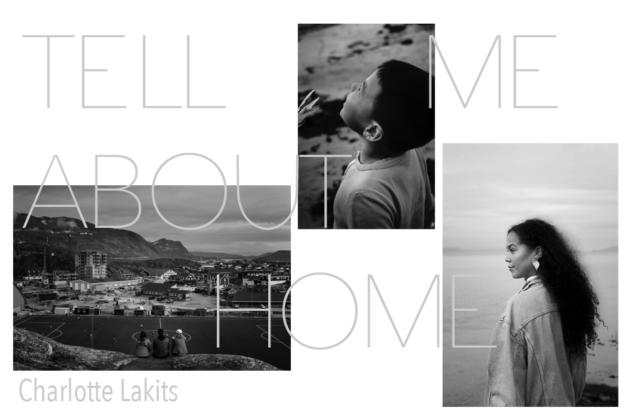 Événement
Événement Charlotte Lakits est une photographe française née à Paris en 1994. En grandissant dans un environnement multiculturel, entourée d’une famille originaire de toute l’Europe, elle a passé une grande partie de son adolescence à définir ce qu’était son « chez soi ». Ce besoin ne l’a jamais réellement quitté. Après ses études de philosophie, durant lesquelles elle écrit un mémoire sur la relation entre les individus et les espaces dans un monde mouvant, elle se rend à Nuuk. C’est là qu’elle commence à collectionner des portraits et des histoires pour son premier projet de documentaire – Tell Me About Home.
I arrived in Nuuk on a Tuesday. Cold wind was blowing as I walked down the empty midday streets. Dissolved distances in a foggy summer day. But through the fog, I could see them. Everywhere. The mountains. The ocean. As limits. Nature as a border that won’t let you go. Greenland’s arctic climate and landscapes simply make road connections between towns impossible. Northernmost capital on the world’s biggest island, Nuuk is geographically isolated. But as Greenland’s most important cultural, political and economical Center, as a metropolis in the Arctic, the city is, in many other ways, well connected to the world. Also, far from being deserted, Nuuk is getting bigger and bigger. In 1978, there were 8.527 inhabitants in Nuuk. 30 years later, 9.269 persons more are living in this city, of which the population, in 2018, counts up to almost 18.000 inhabitants. A lot of people came from small towns and removed areas and Nuuk is now home to a third of Greenland’s population. 80 % of Nuuk’s inhabitants are Greenlandic. 14,5 % are Danish. As I had no idea who the others might be, I started to investigate. Here are some of the people I met. New and old inhabitants. People from Greenland. People from all around the world. People living in Nuuk. Nuuk’s inhabitants.
La soirée de vernissage était notamment animée par la chanteuse et DJ groenlandaise AVIAJA.
La chanteuse et DJ Aviaja vit à Copenhague et est connue pour son énergie, son talent et son contact avec le public. Elle a joué dans les clubs et festivals les plus renommés du Danemark, tels que Roskilde Festival, Distortion, Strøm ou encore Coma Club. Son genre mêle électronique, dance, house, deep house, progressive house, tech house et techno.
L’exposition sera visible jusqu’à la fin du mois d’août.
Horaires d’ouverture :
Du lundi au jeudi de 9.00 à 17.00
Vendredi de 9.00 à 16.00

